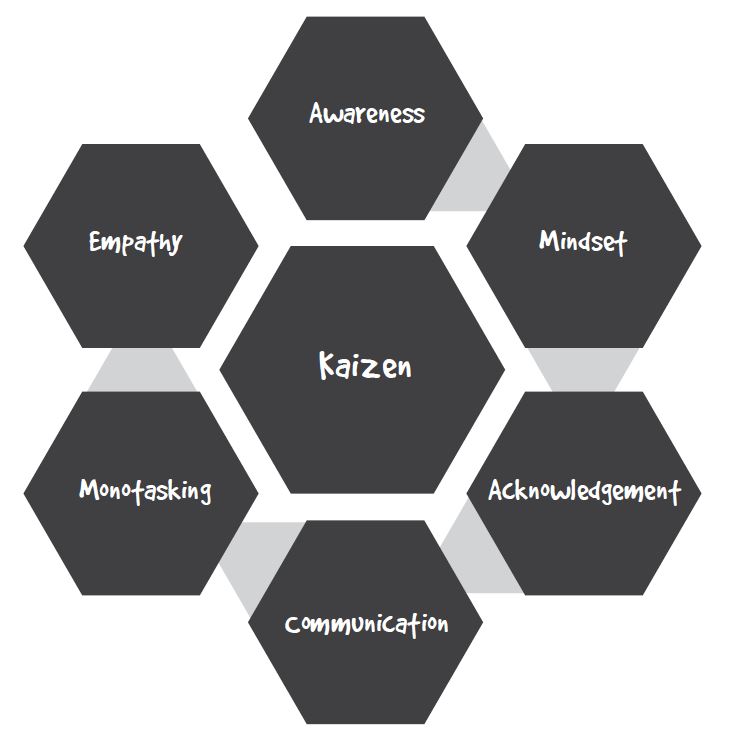 Our lives are filled with tasks, both professionally and personally. How we approach those tasks influences how productive we are and if we complete these things accurately and correctly. In the great task debate, the most talked about are monotasking and multitasking. The latter gets the most attention and is often considered a great skill. However, in most cases, monotasking is the best method for cybersecurity, and you’ll learn why.
Our lives are filled with tasks, both professionally and personally. How we approach those tasks influences how productive we are and if we complete these things accurately and correctly. In the great task debate, the most talked about are monotasking and multitasking. The latter gets the most attention and is often considered a great skill. However, in most cases, monotasking is the best method for cybersecurity, and you’ll learn why.
As the fifth in this series, this post will provide an overview of monotasking. It complements the previous articles on awareness, mindset, acknowledgment, and communication.
What Is Monotasking, and Why Is It Superior to Multitasking?
As you can guess, it’s the opposite of multitasking! Monotasking describes focusing on one thing at a time to achieve more. Somehow, concentrating on the task at hand seemed to correlate to not being able to work in a fast-paced environment or juggle many priorities. Job descriptions for cyber professionals even list multitasking as a desired skill.
I’m here to tell you that this is the wrong way to think about cybersecurity, productivity, and relationships. Multitasking doesn’t have the value the world assigns to it because many things get screwed up when we try to do too many at a time. When multitasking, our brains must compartmentalize and deal with distractions. Ultimately, multitasking quickly leads to mistakes, disengagement, and burnout.
We Weren’t Born to Be Multitaskers
Even though multitasking is a praised attribute, the facts are that humans weren’t built for it. Our brains, even though highly evolved, can’t process multiple emotions simultaneously. You can switch back and forth, but simultaneous isn’t an option. When you multitask, your brain has to change constantly and reset.
Why “Forced” Multitasking Hurts Cybersecurity
The expectation of multitasking in cybersecurity is rampant. There’s an air of toxic positivity around it, with the misbelief that those who can do this get more done and can handle such a dynamic field. The reality is that it messes up the flow of work so that many don’t get much completed. It also brings out anxiety in workers, which hurts the team and themselves.
Anxiety is a normal part of the human condition, but multitasking exacerbates this to the point that technical folks always feel on edge. They are in cycles of fight or flight. As a result, they can’t focus on the clear mission — to protect data and networks. Things are stressful enough in cybersecurity, and multitasking makes it worse.
In addition to more anxiety, workers aren’t present because their minds are going through a million things. If the mind is fragmented, we can’t be present for the conversation or task at hand. It also impedes collaboration, which is a fundamental necessity for any cyber team. Multitaskers don’t actively listen, so communication stalls and risk increases.
Anxiety plus not being present further leads to quality issues in work. When you multitask, your brain combines information subconsciously, so things can get mixed up. That will impact the quality of everything the person does, from sending an email to monitoring the network. Mistakes and errors become more prevalent, and this distraction is a ripe opportunity for cybercriminals.
If multitasking is bad for cybersecurity, then monotasking must be the answer. I wasn’t always so convinced.
Accepting Monotasking
When I first began to learn about monotasking and its value, I was apprehensive but willing to try a new approach. I needed to be more productive and efficient, but I first had to unlearn multitasking, which is hard because it’s ingrained in us. Once I embraced monotasking, I had a clear vision of the destruction of multitasking in cybersecurity, which is why monotasking is part of the Secure Methodology.
Working toward being a monotasker means you have to unlearn multitasking behaviors. It may seem impossible for you and your team to make this adjustment. It’s not easy, but it can deliver many benefits for the company and its employees. So, how do you counteract this conditioning and build a bridge to monotasking as the standard?
Adapting to Monotasking: Tips and Techniques
If you realize that monotasking is the pivot you need to take for your cyber team, you’ll need strategies in hand to make the turn. As part of the monotasking step in my book, The Smartest Person in the Room, I lay out some tips and techniques to use. Here’s a glimpse at some of those.
Distraction-Free Meetings
Whether meetings are in-person or virtual, you should set the tone by requiring these to be device-free zones. In such a space, your team can collaboratively focus on the issue or project at hand. You need your team to be present in these meetings because you’re all trying to solve a problem. You need their full attention in these matters, and you won’t get that if they are checking email or scrolling.
Blocked Time for Specific Tasks
Another great monotasking tactic is to practice and recommend blocked time. It includes setting up specific times on your calendar to do one thing, such as reviewing and responding to emails or calls. Block this time as you would for a meeting so that it shows that you’re busy during that time.
You should also use this method for project work so you have dedicated time to focus on something complex with many moving parts. Having a daily agenda of monotasking helps you prioritize what you need to accomplish and divvy up time for each item on the list.
Once you do this for a while, you’ll better understand the time required to dedicate to blocked time tasks. As a result, you can plan more accurately and be more productive. You’ll be surprised at how this approach can reduce anxiety, enable you to be present, and improve the quality of work.
Figuring Out Why You Feel the Need to Respond Now
Another exercise for moving toward monotasking is determining why you need to respond to chat or email immediately. Emergencies will happen, and you’ll have to deal with them straight away, but most emails can wait.
Understanding the intention behind any behavior helps you break the habit. Whatever the “why” is for you, acknowledge it and then move forward to change your actions.
Saying “No” Is Okay
People often multitask because they have competing priorities that need their attention to meet a due date or urgent need. You can’t say no to all these, as some could be true emergencies. Other things you can say no to right then but pick up later after you finish what you need to do.
You’ve been taught to say yes to everything, but you don’t have to take on more tasks than you can handle. It’s okay to say no based on what your workload already is. You want to show your team that the environment is not one where you don’t have a say in your agenda. Explain to them that pushing back is an acceptable response. You’d rather have them focus on completing one thing than hopping all around and getting nothing done.
Deep Focus Outperforms the Multitasking
In the pursuit of creating a monotasking culture, you will get lots of pushback. Many think that multitasking is a superpower. They believe it’s part of their identity and will not want to change. However, the steps in the Secure Methodology before monotasking can set the stage for this as people evolve to a growth mindset and become better communicators. So, this behavioral shift isn’t on shaky ground.
Multitasking can be a badge of honor, especially for those who want to be the smartest person in the room. They equate smart with being able to do many things at once. Unfortunately, multitasking doesn’t deliver these kinds of results. Deep focus does.
When someone can apply deep focus to a task without all the noise and clutter, they are more productive and effective. Tension drops, and they no longer have to be in that fight-or-flight mode. Of course, getting buy-in on deep focus will take convincing and illustration. I include specific exercises in the book to support this. In addition, talking about monotasking and its benefits through anecdotes will make it more tangible.
Monotasking Should Be a Cybersecurity Pillar
I’d like to see the day that a cyber job description included monotasking as a skill versus its cousin, multitasking. It should be a core pillar of cybersecurity in every organization. It’s, perhaps, a radical idea right now, but one with data and research to support it.
Can you turn your team into monotaskers? It will require disruption to their beliefs about work and productivity. Change is hard no matter how beneficial, but if you’ve proceeded through the Secure Methodology’s first four steps, you’ll have a strong foundation.
You can learn more about the Secure Methodology and monotasking by reading my book, The Smartest Person in the Room.
 The advent of technology makes it easier for us to communicate with our staff and improve our business processes. However, it can also be a major risk to our organization: Hackers are lurking in every corner, waiting for the right time to steal information from us.
The advent of technology makes it easier for us to communicate with our staff and improve our business processes. However, it can also be a major risk to our organization: Hackers are lurking in every corner, waiting for the right time to steal information from us.
 How we take on tasks significantly influences our productivity during the day. Even when given a minor task, a person will likely have difficulty completing it if they’re using the wrong techniques and not utilizing their available resources.
How we take on tasks significantly influences our productivity during the day. Even when given a minor task, a person will likely have difficulty completing it if they’re using the wrong techniques and not utilizing their available resources. This blog post is a transcription from the video at the bottom of the post.
This blog post is a transcription from the video at the bottom of the post.

